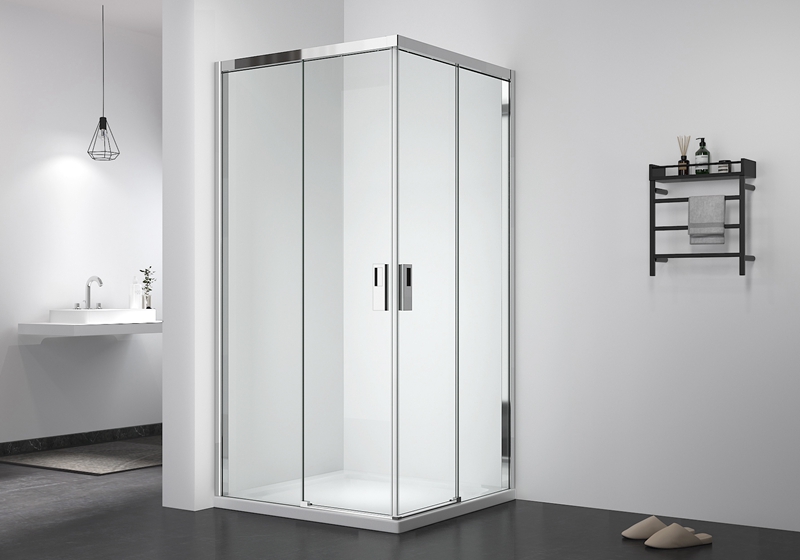Industry knowledge
Glass Cutting: The first step is to cut the 8mm thick tempered glass panels according to the required dimensions for the shower enclosure. Precision cutting is essential to ensure proper fit and alignment during assembly.
Glass Edging: After cutting, the edges of the glass panels are carefully smoothened and polished to remove any sharp or rough edges. This process improves safety and aesthetics.
Frame Fabrication: The frame components, usually made of aluminum or stainless steel, are fabricated according to the design specifications. The frame provides structural support and stability to the shower enclosure.
Frame Finishing: The frame is finished with a desired color or coating, such as chrome or brushed nickel, to enhance its appearance and protect it from corrosion.
Assembly: The glass panels and frame are assembled, typically using screws, brackets, or clips. The frame is carefully aligned and secured to the glass panels, ensuring a proper fit and stability.
Sliding Mechanism Installation: The sliding mechanism is installed, allowing the glass doors to slide smoothly along the tracks. This mechanism may include rollers, bearings, or other components that enable easy opening and closing of the doors.
Soft-Closing System Integration: The soft-closing system, which provides a controlled and gentle closing of the doors, is integrated into the shower enclosure. This system usually includes dampers or buffers that slow down the door's movement and prevent slamming.
Sealing: Seals and gaskets are applied to the edges and joints of the shower enclosure to create a watertight seal. These seals prevent water leakage and ensure that the shower area remains dry.
Quality Control: The finished shower enclosure undergoes rigorous quality control checks to ensure that it meets the required standards. This includes checking for proper alignment, functionality of the sliding and soft-closing mechanisms, and overall structural integrity.
Packaging: Once the shower enclosure passes quality control, it is carefully packaged to protect it during transportation. The packaging may include foam padding, cardboard, or other materials to safeguard against potential damage.




 English
English Deutsch
Deutsch































